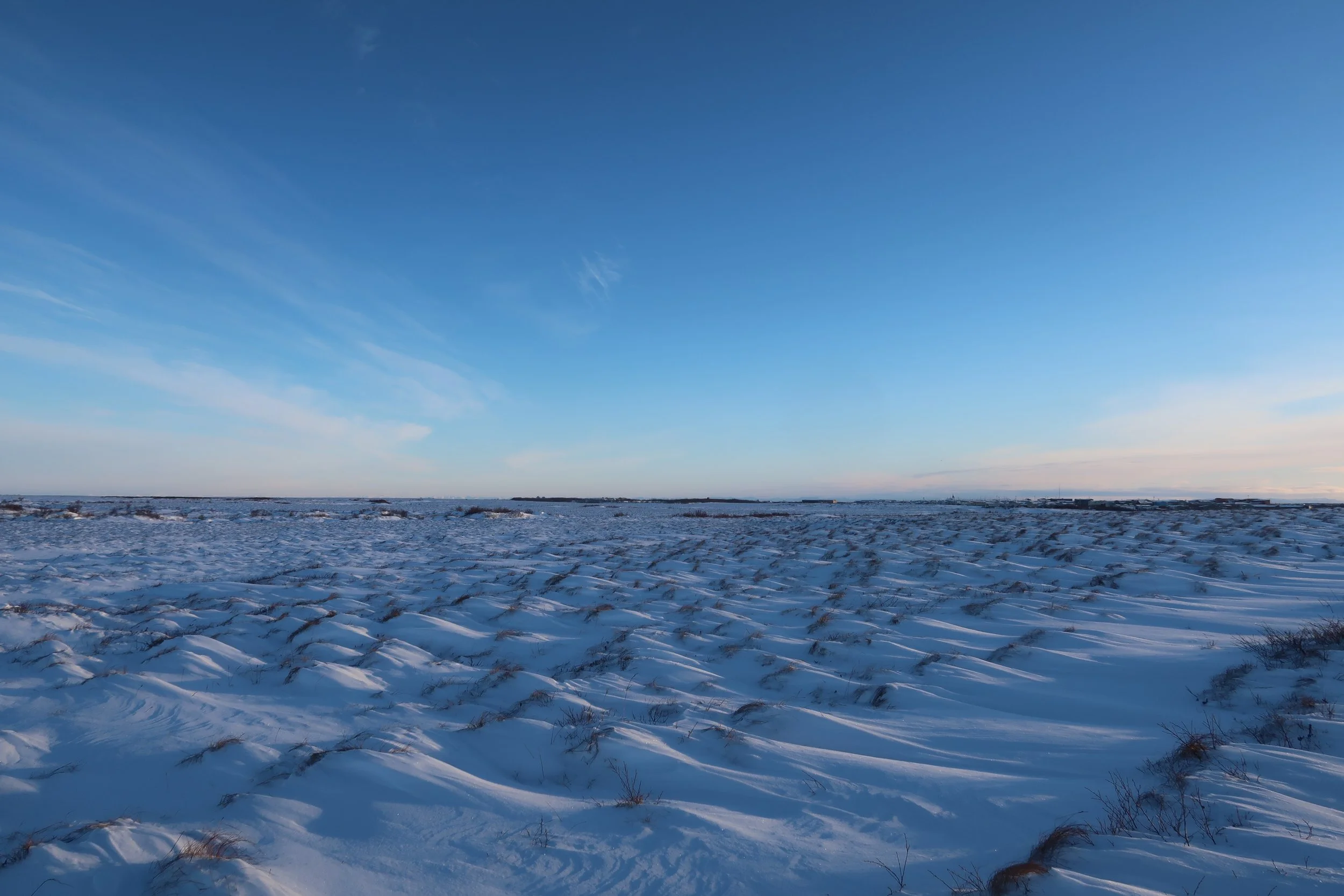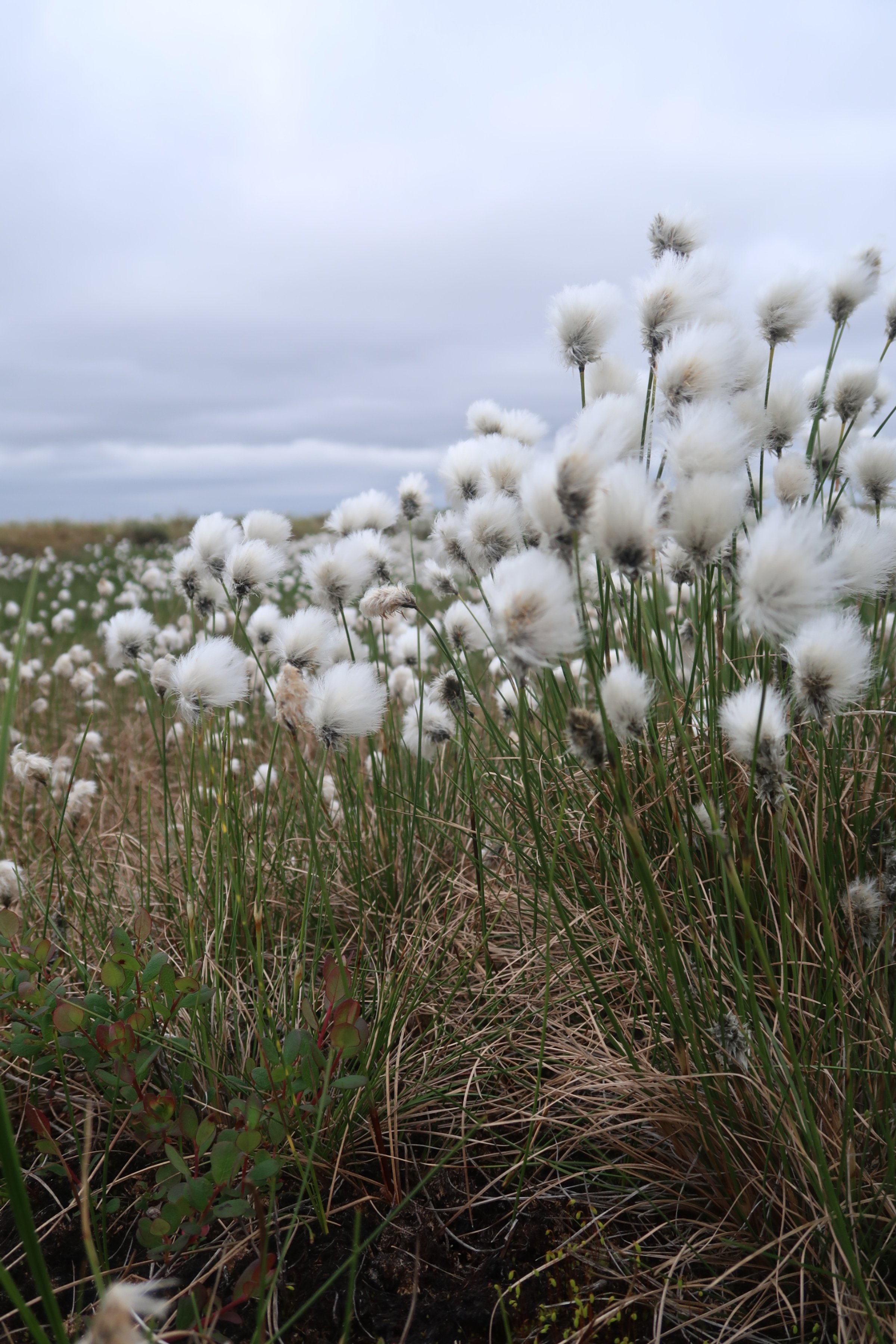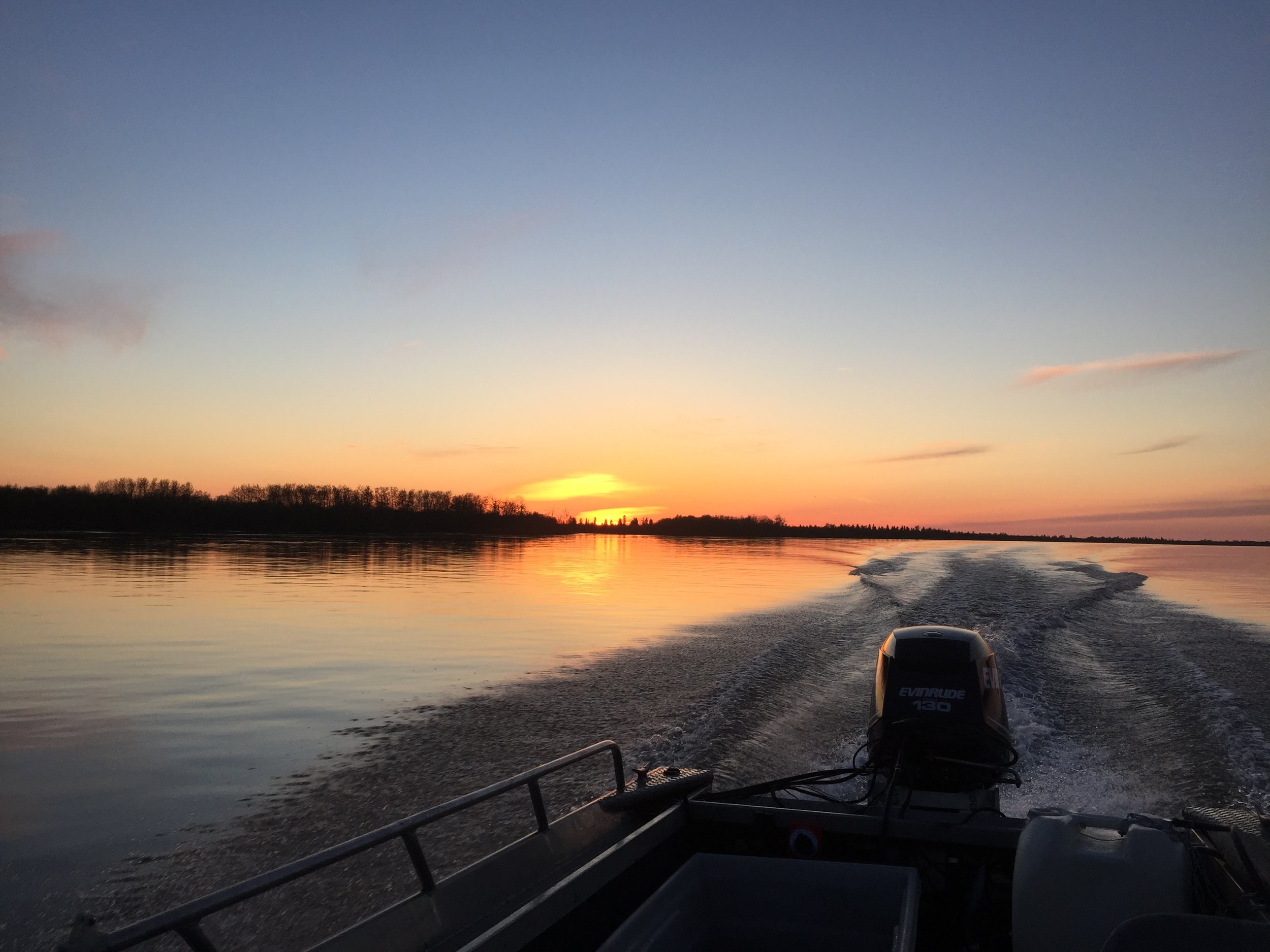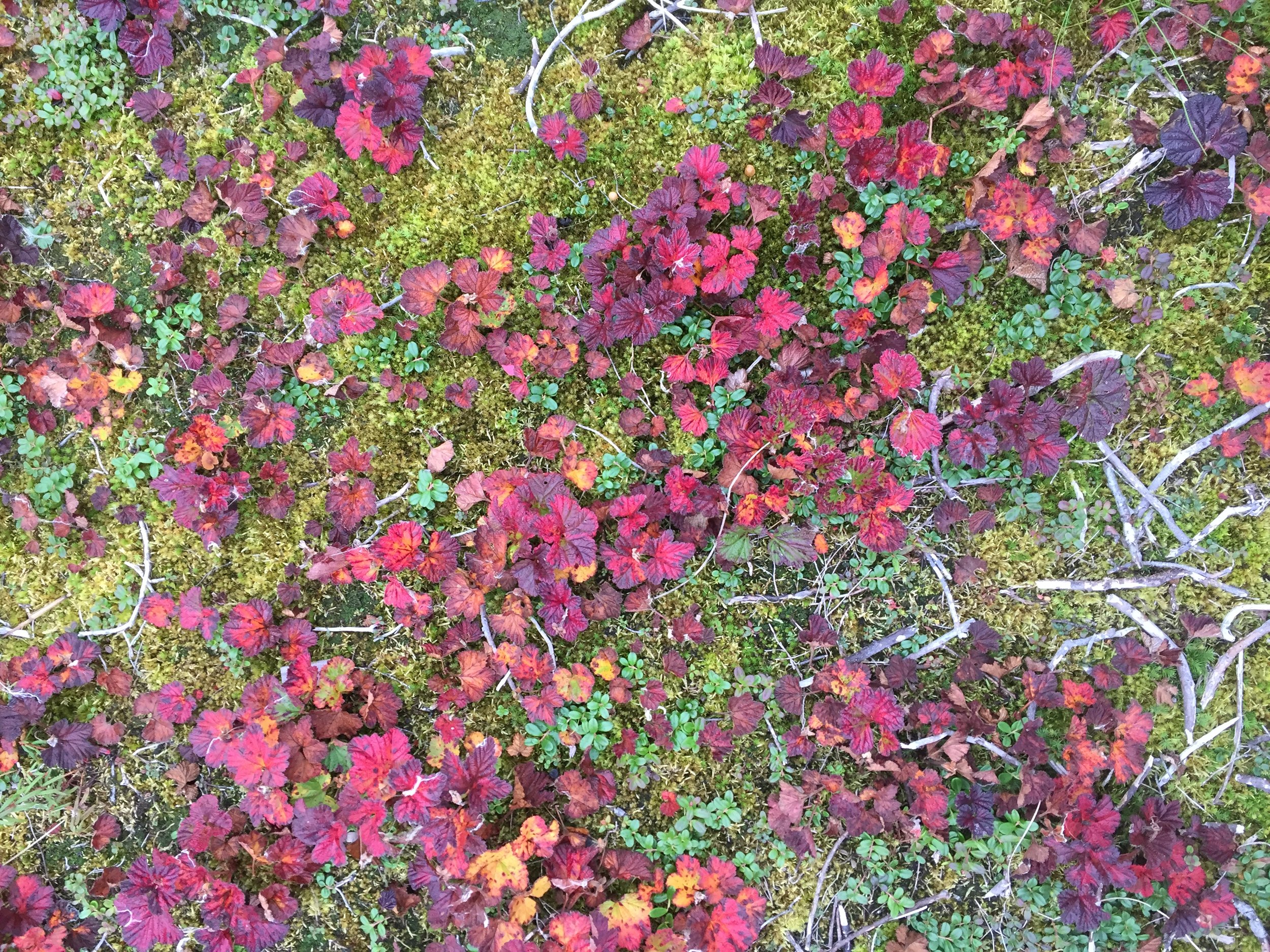Kuskokwim River 2022 Post-Season Summary
Photos courtesy Terese Schomogyi/KRITFC unless otherwise stated.
Now that it’s November, ice has formed on the Kuskokwim, and we have some preliminary salmon data to review, we thought we’d share a little bit about the 2022 salmon season.
Salmon Co-Management
For the seventh year in a row, we collaboratively managed the Kuskokwim River salmon fisheries with Yukon Delta NWR. Our Tribal-Federal co-management team was guided by our 2022 Salmon Management and Harvest Strategy, which we cooperatively developed in the winter/spring and relied upon throughout the salmon runs.
Yukon Delta NWR in consultation with KRITFC provided 11 subsistence salmon fishing opportunities in the lower Kuskokwim (from the mouth to Aniak) for king, chum, and sockeye salmon between June 1 and July 21. We estimate that lower river fishers between Tuntutuliak and Akiak harvested 29,920 king salmon, 25,400 sockeye salmon, and 3,630 chum salmon during these opportunities. This data comes from our Community-Based Harvest Monitoring (CBHM) program, which did not survey coho salmon in 2022. A full in-season harvest estimate report produced by KRITFC, Orutsararmiut Native Council, and Yukon Delta NWR will be published soon. Alaska Department of Fish & Game’s post-season harvest survey report will be published next spring.
During Tribal-Federal co-management, our In-Season Managers met nearly weekly with the Yukon Delta NWR fisheries team to discuss the salmon runs, share local and Indigenous Knowledge, and analyze in-season Western scientific data.
Quyana, Tsen’ahn for the hard work of our KRITFC in-season management team this year:
Betty Magnuson (McGrath), Headwaters ISM
Megan Leary (Napaimute), Middle River ISM
Mike Williams Sr. (Akiak), Lower River ISM
Avery Hoffman (Bethel), Lower River ISM
Paul Cleveland (Quinhagak), Tundra/Coastal ISM
James Nicori (Kwethluk), Elder Advisor
Robert Lekander (Bethel), Elder Advisor
ISM Megan Leary, Elder Advisor Robert Lekander, and former ISM Jacki Cleveland discuss the ISM role at our 2022 annual meeting.
The KRITFC and Yukon Delta NWR management team meets in June 2022.
Thanks to their work, we met our KRITFC–Yukon Delta NWR target rebuilding escapement goal range of 100,000-120,000 king salmon and, even while protecting spawners, provided some salmon fishing opportunities throughout the king, chum, and sockeye salmon season. We consider this a successful year, though we are acutely aware that Kuskokwim fishing communities, particularly those in the headwaters communities, did not harvest the amounts necessary for subsistence (ANS) for Chinook or chum salmon this year and met only a fraction of their goals.
Federal management lifted on July 21 after our conservation concerns for king and chum salmon passed, and the entire river opened to unrestricted subsistence salmon fishing. However, the Alaska Department of Fish & Game severely restricted fishing from August 17 to September 15 to protect a record-low coho salmon run. While our Tribal-Federal team monitored the silvers, shared concerns for salmon conservation, and worried about our communities getting the food they needed, we ultimately did not take action because the fish were too few to provide a federal subsistence opportunity. You can read more about that decision here. Due to low numbers and limited harvest windows, Kuskokwim communities did not meet coho salmon ANS in 2022.
In-Season Salmon Monitoring Projects
From April to September, we coordinated and partnered on 5 in-season salmon monitoring projects:
KRITFC and ONC in-season harvest monitors in staff at our 2022 training.
USFWS and KRITFC crews operating the smolt outmigration screw trap. Photo courtesy Boyd Blihovde.
Kwethluk weir crew lead Clay Hines samples for eDNA.
The Takotna River weir in July 2022. Photo courtesy Kevin Whitworth/KRITFC.
We continued our successful Community-Based Harvest Monitoring (CBHM) program this season. Ten Harvest Monitors in eight lower river communities collected 574 harvest surveys in their communities during and shortly after 10 subsistence salmon fishing opportunities. Combined with Bethel area data collected by ONC, we surveyed approximately 46% of all fishing trips (drift and set net) between Tuntutuliak and Akiak from June through July.
Quyanaqvaa to all those who helped the CBHM program run this year, especially our Harvest Monitors: James Heakin (Eek), Peter Nelson (Napakiak), Kimberly Nicholai and Wesley Nicholai (Napaskiak), Alfred Epchook, Caleb Uttereyuk, and Shane Unin (Kwethluk), Kyra Phillip (Akiachak), Melanie Phillip (Akiak), and Carl Napoka Jr. (Tuluksak).
We are also deeply grateful to LaMont Albertson for his work managing the CBHM program this season; quyana, tsen’ahn, LaMont.
With the Organized Village of Kwethluk and U.S. Fish and Wildlife Service, we helped operate 3 projects on the Kwethluk River. The smolt outmigration (screw trap) project ran from April through June to count and identify juvenile salmon as they swam out of the Kwethluk. From June through September, the Kwethluk River weir counted, identified, and collected age-sex-length data on in-migrating adult salmon spawners. Together, these two projects give us an idea of how productive, or how many eggs in the gravel survive to return as spawners, the Kwethluk tributary is. We also piloted a new environmental DNA (eDNA) project at the weir site; we look forward to analyzing the eDNA samples with University of Alaska-Fairbanks this winter and collecting more samples at the Kwethluk and Takotna weirs next year.
Quyana, Tsen’ahn to each of our seasonal employees and the others on this team who made these Kwethluk projects happen: Timothy Michael, Raymond Egoak, Ozzie Rivers, Evan Waska, and Justin Guy (all from Kwethluk), Patrick Gregory (Tuluksak), and Jerad Vanderpool (McGrath).
With Takotna Tribal Council and Alaska Department of Fish & Game, we operated the Takotna River weir to count, identify, and collect salmon and environmental data in the Takotna River tributary.
Tsen’ahn to the 7 weir crew members who worked hard and late into the season to operate the weir and try to remove equipment in high, cold water conditions: Robert Perkins, Alfred Perkins, John Lindermen, Michael Dopler, Dan Dopler, Joseph Dopler, Richard Watcher (all from Takotna), and Jerad Vanderpool (McGrath).
Preliminary Salmon Data
We also have some preliminary estimates for salmon run sizes, lower river harvests, and spawner escapements, thanks to the Alaska Department of Fish & Game’s post-season report and KRITFC, ONC, and Yukon Delta NWR’s in-season harvest estimate report (coming soon). Here’s a breakdown of key preliminary spawner and harvest estimates:
The total preliminarily estimated run size of 143,622 king salmon (95% confidence interval: 106,565–193,565) is on par with recent years since the 2009 crash. While not the lowest king return we have seen, it is well below long-term historical Chinook salmon runs – and the kings that returned were smaller in size, providing less food for fishers and fewer eggs for the gravel. We are glad to see a preliminarily estimated escapement of 105,774 Chinook salmon (95% confidence interval: 68,717–155,717). This falls at the upper end of the escapement goal range of 65,000–120,000, meaning it aims to rebuild, rather than maintain, the Kuskokwim king salmon population.
All established king salmon weir-based escapement goals at the Kwethluk, George, and Kogrukluk weirs were met in 2022, but counts at the Salmon–Pitka Fork were well-below the recent 10-year average. While a drainage-wide harvest report is forthcoming in spring 2023, the initial in-season harvest estimate of 29,920 kings harvested in the lower river, while higher than recent years’ harvests, is still well below the ANS levels of 67,200–109,800 fish. This means subsistence fishers sacrificed their harvests – and their cultural, spiritual, and economic health – to conserve kings and meet critical population rebuilding targets.
Both the chum and coho salmon runs were dismal in 2022. The chum salmon return was the second-lowest on record, and the silver salmon run was the lowest on record. No escapement goals for either species were met at any weir project; weir counts for all chum and coho salmon stocks were well-below the recent 10-year averages; and, because of low numbers and prolonged closures, subsistence fishers did not meet their harvest needs for chum or coho salmon this year.
The 2022 Kuskokwim River sockeye salmon return was strong. The escapement goal at the Kogrukluk weir was achieved, and counts at the Telaquana and Salmon–Aniak were above the recent 10-year averages. Although counts at the Kwethluk, George, and Kogrukluk were below their respective recent 10-year averages, all indicators point to a stable sockeye salmon run. We project that subsistence harvest needs will be met for sockeye salmon, although they were challenging to harvest amid prolonged gillnet closures. Moreover, communities upriver of Stony River do not fish for reds because they spawn below their headwaters tributaries.
Full preliminary data can be found in ADF&G’s 2022 season summary here.
With the collapse of Kuskokwim coho salmon stocks on top of poor chum and Chinook salmon returns this year, our communities are living through a multi-species, multi-year salmon collapse with severe threats to our food, cultural, spiritual, and economic security. There are many causes (some of which we are still discovering) that cumulatively cause these salmon declines, but we know that salmon intercept and bycatch have a significant role to play – and lowering the rates of bycatch and intercept is possible, manageable, and a key to restoring Kuskokwim and Western Alaska salmon populations.
For more information on the Kusko salmon crisis and how intercept and bycatch affect it, check out our 2022 Kuskokwim River Salmon Situation Report, released in October and being updated as more information becomes available. We will be posting more information on how to engage with the North Pacific Fishery Management Council in December 2022 and Alaska Board of Fisheries in February 2023 to minimize and better manage salmon bycatch and intercept – stay tuned.
Quyana, Tsen’ahn, Thanks to everyone who supports our work to protect Kuskokwim salmon and traditional ways of life. Want more information from us? Subscribe to our newsletter or contact our staff. We are happy to find a time to meet with your Tribal Council, organization, or community and continue the conversation.












